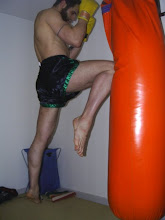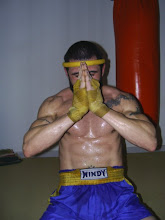I still remember when I was only 14 when I first got to learn about Martial Arts, I was always beaten up by some school bullies, learning Martial Arts was just to defend myself. I was very active in other sports too, such as Basketball, Swimming, Skating, but my favorite day fell on Sunday, because I get to go to my favorite class, which is Martial Arts.
It all ended when I reach 17, after a serious injury during sparing. And I am not able to pick up any more sports after that.
Back in 2009, while I was reading the weekend papers, something caught my eye. It was an interview on about Kendokas in Malaysia. I was thinking, it would be great if I can still do martial arts (some of you might understand) I decided to call up the club which is JCKL (Japan Club Kuala Lumpur) and join.
The first 2 class was tough, I can’t even barely run, and now I need to slide and raise my heel while standing? I taught of giving up upon the 3rd or 4th class. It was when I first saw Iwamoto Sensei in her Bogu sparing.
She has the person the lit up the fire in me to continue training, I was stunned with her move. She is so graceful in her moves, Especially when she block a “Men” cut and immediately charge at the opponent with a “Do” cut. It looked as if she is dancing.
I really hope Iwamoto Sensei is reading this because I really wanted to thank her very much as I didn’t get to thank her when she left back to Japan, I enjoyed and loved every single class that I go to and I felt as if I’m young again. After enduring a year of pain while doing Suriyashi, the pain is now gone, sometime I do feel the pain coming back, but it doesn’t matter anymore, cause I enjoyed my class.
Ishii Sensei, Chua Sensei, Masuo Sensei, Yap Sensei, Lim Sensei, Wong Sensei and sorry if I missed any names, has been really kind to me and made me realize how fun can Kendo be, I slowly realized that I have changed a lot in the past 1 year, and now Kendo is not what I do for fun anymore, it has been a part of me.
I really wanted to thank all Sensei/Teacher/Master/Senpai like Kongnapa (Muay Thai) , Mark Small (Tai Chi), Graham Clunan (Taijutsu), Michael S. Fuchs (Tai Chi), Ric Hurst (Ninjutsu), Ebony Washington (Taekwondo), Antonio Graceffo (Bokarto) for accepting the interviews and being an inspiration to the students like myself
Please do enjoy the short interview with my favorite and the MOST Graceful Kendoka I have met, I hope that those who wanted to take up Kendo, can really get some advice from her.
Regards
ShouJian
 Special Interview with my Sensei, Miho Iwamoto
Special Interview with my Sensei, Miho Iwamoto






















